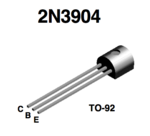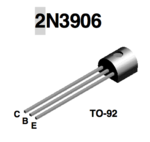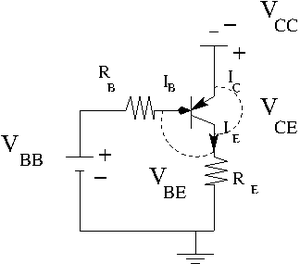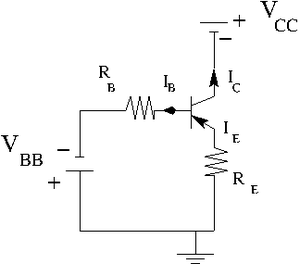Difference between revisions of "Lab 13 RS"
| Line 35: | Line 35: | ||
| <math>h_{FE}\ min \ </math> ||<math>h_{FE}\ max \ </math>||<math>I_C</math>, <math>V_{CE}</math> | | <math>h_{FE}\ min \ </math> ||<math>h_{FE}\ max \ </math>||<math>I_C</math>, <math>V_{CE}</math> | ||
|- | |- | ||
| − | |40||300||<math>I_C=0.1\ mA</math>, <math>V_{CE}=1\ V</math> | + | |40||300||<math>I_C=0.1\ mA</math>, <math>V_{CE}=1.0\ V</math> |
|- | |- | ||
| − | |70 ||300||<math>I_C=1\ mA</math>, <math>V_{CE}=1\ V</math> | + | |70 ||300||<math>I_C=1\ mA</math>, <math>V_{CE}=1.0\ V</math> |
|- | |- | ||
| − | |100 ||300||<math>I_C=10\ mA</math>, <math>V_{CE}=1\ V</math> | + | |100 ||300||<math>I_C=10\ mA</math>, <math>V_{CE}=1.0\ V</math> |
|- | |- | ||
| − | |60 ||300||<math>I_C=50\ mA</math>, <math>V_{CE}=1\ V</math> | + | |60 ||300||<math>I_C=50\ mA</math>, <math>V_{CE}=1.0\ V</math> |
|- | |- | ||
| − | |30 ||300||<math>I_C=100\ mA</math>, <math>V_{CE}=1\ V</math> | + | |30 ||300||<math>I_C=100\ mA</math>, <math>V_{CE}=1.0\ V</math> |
|} | |} | ||
| − | |||
| − | |||
Revision as of 04:26, 11 March 2011
DC Bipolar Transistor Curves
Data sheet for transistors.
Media:2N3904.pdfMedia:2N3906.pdf
Using 2N3904 is more srtaight forward in this lab.
Transistor circuit
1.) Identify the type (n-p-n or p-n-p) of transistor you are using and fill in the following specifications.
| Value | Description | ||
|---|---|---|---|
| Collector-Base breakdown voltage | |||
| Emitter-Base Breakdown Voltage | |||
| Maximum Collector-Emitter Voltage | |||
| Maximum Collector-Emitter Voltage | |||
| Maximum Collector Current - Continuous | |||
| Transistor Power rating() | |||
| , | |||
| 40 | 300 | , | |
| 70 | 300 | , | |
| 100 | 300 | , | |
| 60 | 300 | , | |
| 30 | 300 | , | |
2.) Construct the circuit below according to the type of transistor you have.
Let .
variable power supply
.
Find the resistors you need to have
, , and
3.) Measure the emitter current for several values of by changing such that the base current A is constant.
| V_{CC} | V_B | V_{BB} | V_ {EC} | V_ E | R_E | R_B | I_E | I_B |
| mV | mV | V | mV | mV | k | mA | \muA | |
4.) Repeat the previous measurements for A. Remember to keep so the transistor doesn't burn out
| V_{CC} | V_B | V_{BB} | V_ {EC} | V_ E | R_E | R_B | I_E | I_B |
| mV | mV | V | mV | mV | k | mA | \muA | |
5.) Graph -vs- for each value of and above. (40 pnts)
6.) Overlay points from the transistor's data sheet on the graph in part 5.).(10 pnts)
Questions
- Compare your measured value of or for the transistor to the spec sheet? (10 pnts)
- What is for the transistor?(10 pnts)
- The base must always be more _________(________) than the emitter for a npn (pnp)transistor to conduct I_C.(10 pnts)
- For a transistor to conduct I_C the base-emitter junction must be ___________ biased.(10 pnts)
- For a transistor to conduct I_C the collector-base junction must be ___________ biased.(10 pnts)
Extra credit
Measure the Base-Emmiter breakdown voltage. (10 pnts)
I expect to see a graph and a linear fit which is similar to the forward biased diode curves. Compare your result to what is reported in the data sheet.
Go Back to All Lab Reports Forest_Electronic_Instrumentation_and_Measurement



